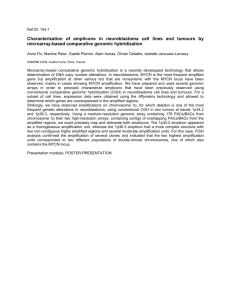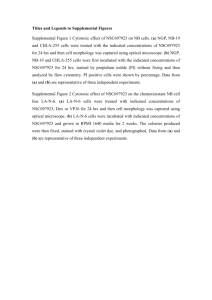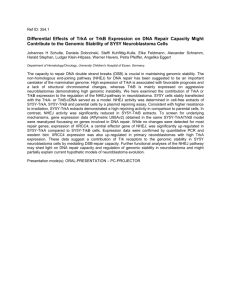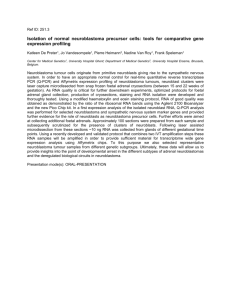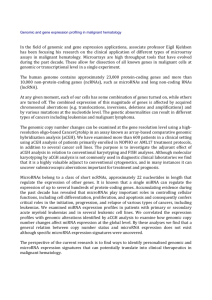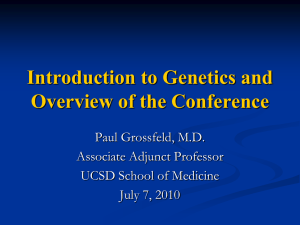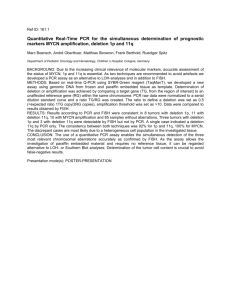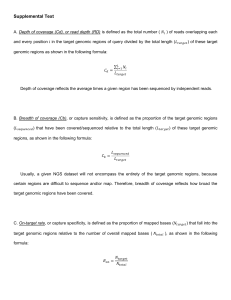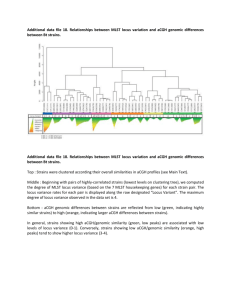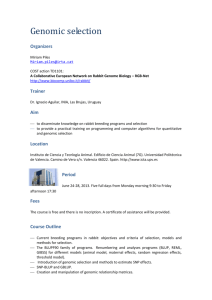223.4 Mosse
advertisement
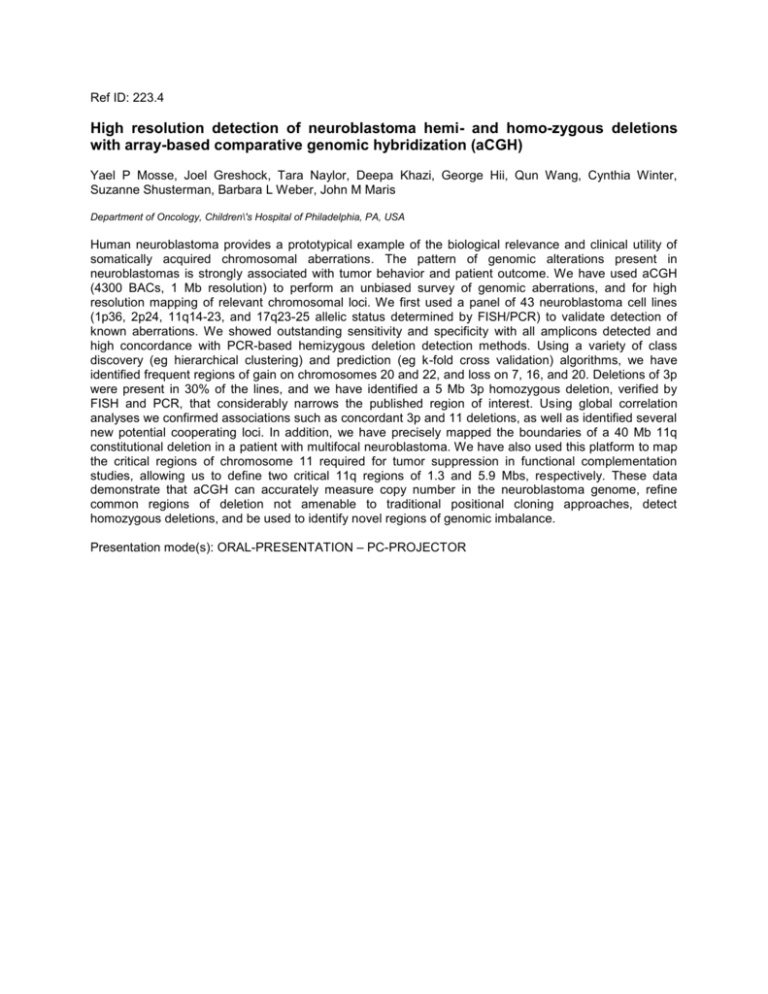
Ref ID: 223.4 High resolution detection of neuroblastoma hemi- and homo-zygous deletions with array-based comparative genomic hybridization (aCGH) Yael P Mosse, Joel Greshock, Tara Naylor, Deepa Khazi, George Hii, Qun Wang, Cynthia Winter, Suzanne Shusterman, Barbara L Weber, John M Maris Department of Oncology, Children\'s Hospital of Philadelphia, PA, USA Human neuroblastoma provides a prototypical example of the biological relevance and clinical utility of somatically acquired chromosomal aberrations. The pattern of genomic alterations present in neuroblastomas is strongly associated with tumor behavior and patient outcome. We have used aCGH (4300 BACs, 1 Mb resolution) to perform an unbiased survey of genomic aberrations, and for high resolution mapping of relevant chromosomal loci. We first used a panel of 43 neuroblastoma cell lines (1p36, 2p24, 11q14-23, and 17q23-25 allelic status determined by FISH/PCR) to validate detection of known aberrations. We showed outstanding sensitivity and specificity with all amplicons detected and high concordance with PCR-based hemizygous deletion detection methods. Using a variety of class discovery (eg hierarchical clustering) and prediction (eg k-fold cross validation) algorithms, we have identified frequent regions of gain on chromosomes 20 and 22, and loss on 7, 16, and 20. Deletions of 3p were present in 30% of the lines, and we have identified a 5 Mb 3p homozygous deletion, verified by FISH and PCR, that considerably narrows the published region of interest. Using global correlation analyses we confirmed associations such as concordant 3p and 11 deletions, as well as identified several new potential cooperating loci. In addition, we have precisely mapped the boundaries of a 40 Mb 11q constitutional deletion in a patient with multifocal neuroblastoma. We have also used this platform to map the critical regions of chromosome 11 required for tumor suppression in functional complementation studies, allowing us to define two critical 11q regions of 1.3 and 5.9 Mbs, respectively. These data demonstrate that aCGH can accurately measure copy number in the neuroblastoma genome, refine common regions of deletion not amenable to traditional positional cloning approaches, detect homozygous deletions, and be used to identify novel regions of genomic imbalance. Presentation mode(s): ORAL-PRESENTATION – PC-PROJECTOR
